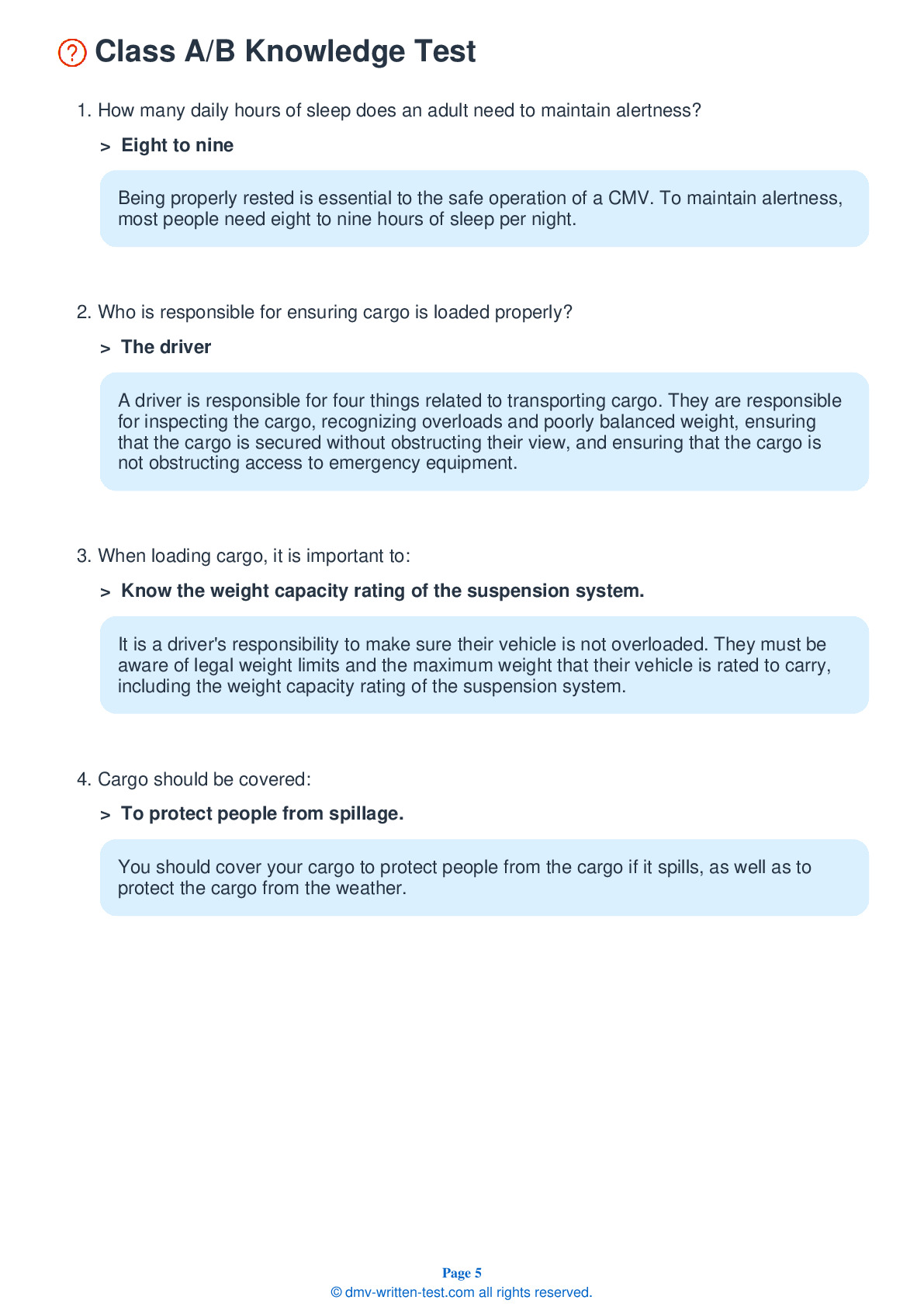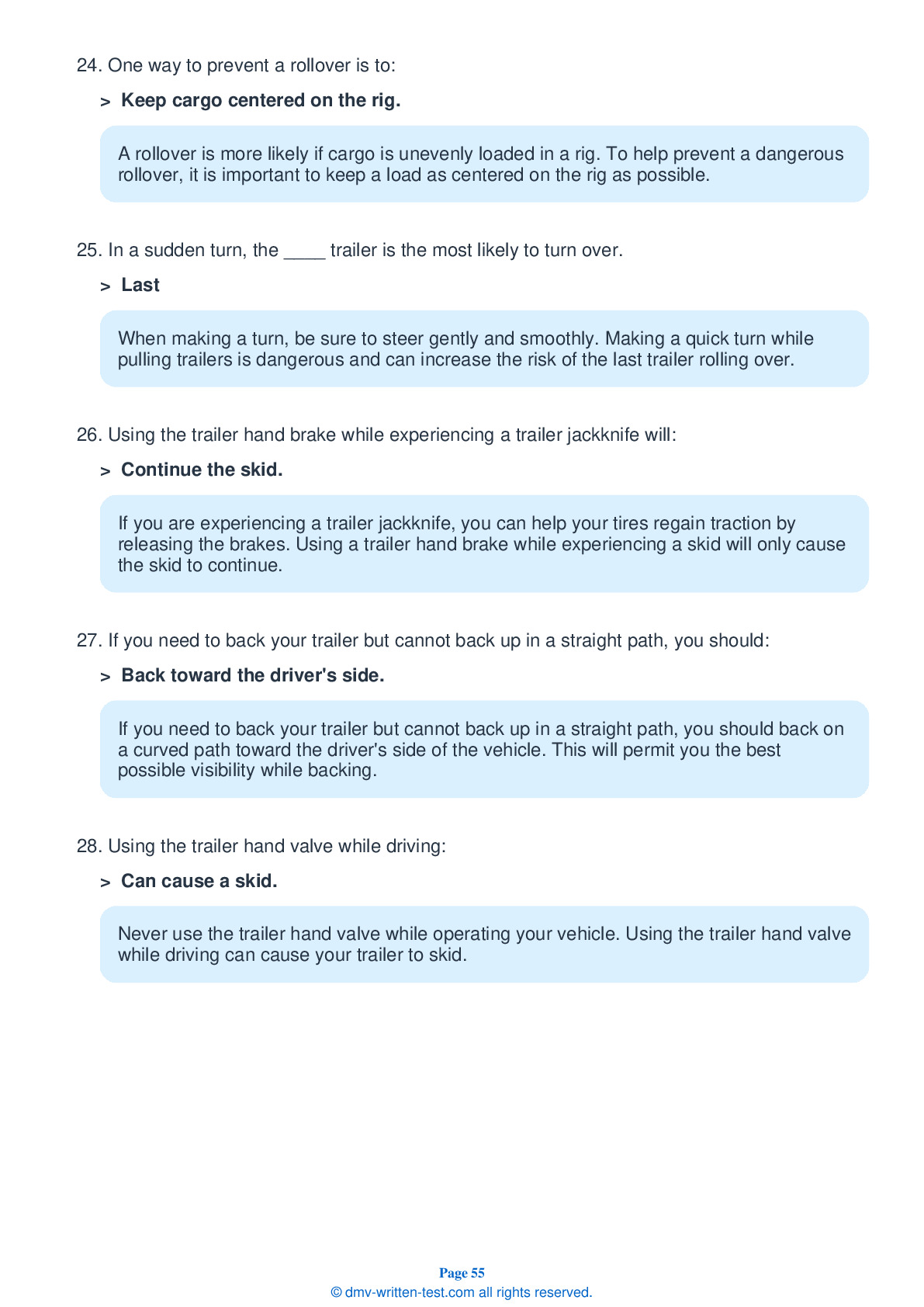Air Brakes
This endorsement is required for driving a vehicle with air brakes. To receive this endorsement, applicants must pass a written test. The test consists of 25 multiple choice questions. Each question has three answer choices. To pass, the applicant must answer at least 20 questions correctly. Test questions come from the Hawaii Commercial Driver License Manual. Questions come from the chapter covering: Air Brakes. The Air Brakes endorsement may be used with the Class A, B or C CDL.
Number of Question
Passing Score
1. Which of the following is not part of a vehicle’s air brake system?
Explanation
Components of an air brake system include an air compressor, an air compressor governor, air storage tanks, air tank drains, an alcohol evaporator, a safety valve, a brake pedal, foundation brakes, supply pressure gauges, an application pressure gauge, a low air pressure warning signal, a stop light switch, a front brake limiting valve (on some older vehicles), spring brakes, and parking brake controls.
2. In a vehicle with dual air brakes, a leak in one system ____ the second system.
Explanation
A dual air brake system is made up of two separate air brake systems. If there is an air leak in one system, it may not affect the other.
3. Lights that indicate that anti-lock brakes are not working are:
Explanation
Vehicles equipped with Anti-Lock Braking Systems (ABS) have yellow malfunction lights to indicate issues in the braking system.
4. What should happen before the air pressure in an air brake system tank falls below 55 psi?
Explanation
The low air pressure warning signal must activate before the air supply pressure drops below 55 psi in the air tank. If the warning signal does not turn on when being tested during an inspection, the vehicle is not safe to drive.
5. The parking brake in a newer vehicle is applied by:
Explanation
In newer vehicles with air brakes, the parking brake is controlled by a yellow, diamond-shaped knob. The driver should pull the knob outward to apply the parking brakes and push the knob inward to release them.
6. Failing to drain air tanks could result in:
Explanation




